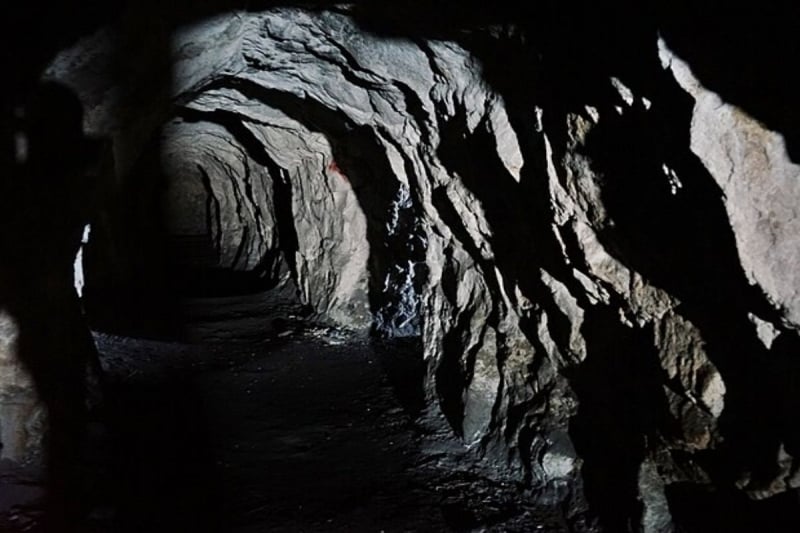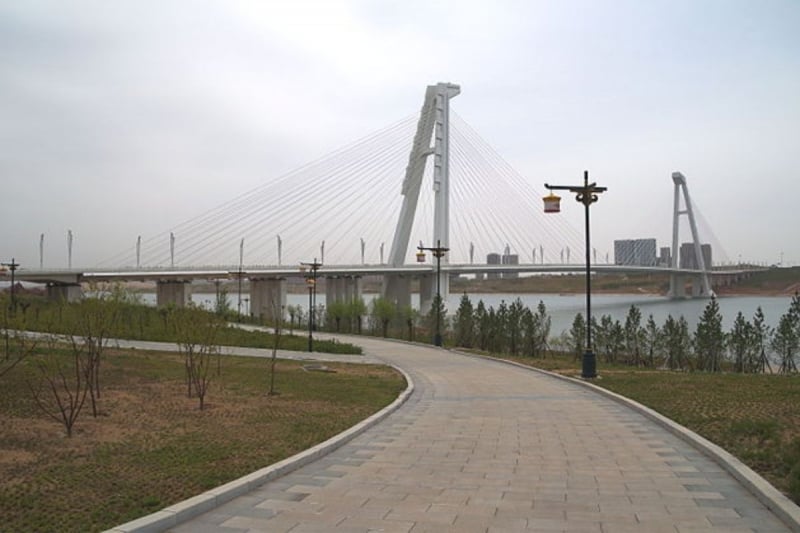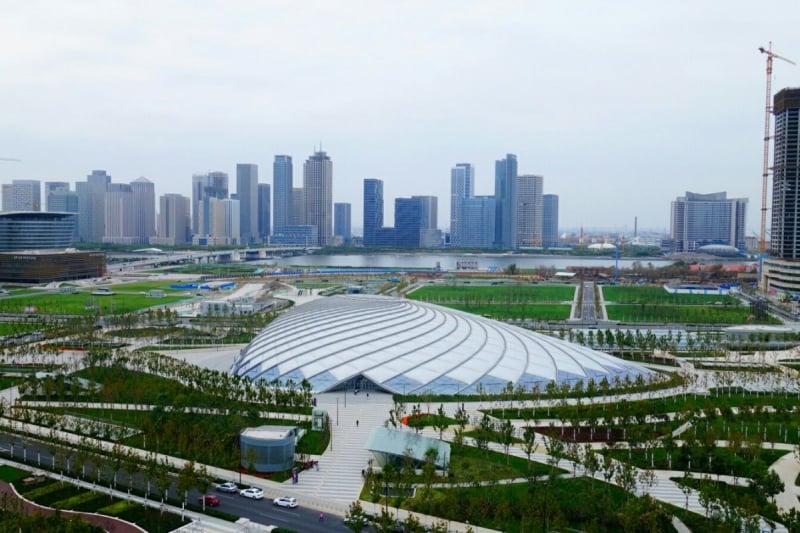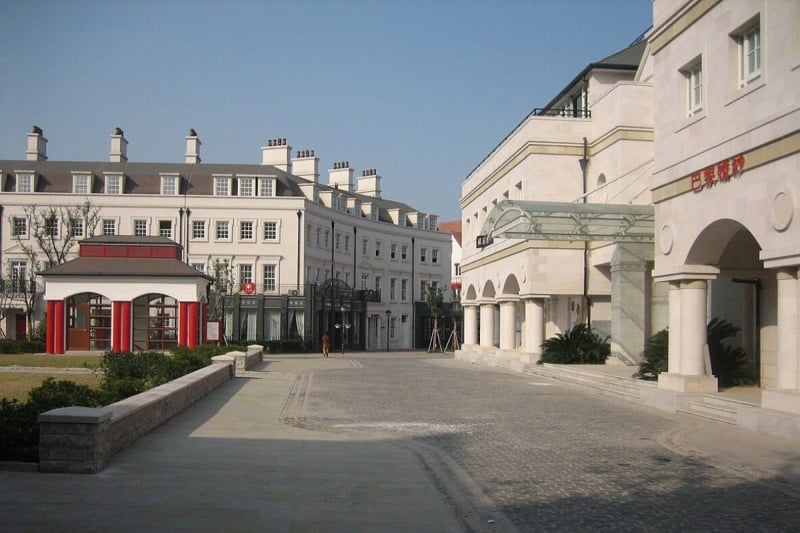Skyscrapers with no one inside. Empty streets lined with brand-new buildings. A replica of Paris, complete with an Eiffel Tower, standing quietly in the suburbs of Hangzhou.
China’s ghost towns are not your typical tourist spots, but they are oddly fascinating. These places were designed to be lived in, with homes, schools, and business districts ready to go. But for a mix of reasons, many never filled up the way they were supposed to. Some feel like movie sets. Others are slowly coming to life again.
If you’re curious about places that sit on the edge of the ordinary, here are a few ghost towns in China you can actually visit, along with what makes them so strange and interesting.
Also read: 7 Unique Things to Do in China You Didn’t Know Existed
1. Tianducheng, Hangzhou

Image Credit: DashaMuller via Canva Pro
A quiet Paris in China
About an hour from central Hangzhou, Tianducheng is one of China’s most well-known ghost towns. It was designed to look like Paris, with a scaled-down Eiffel Tower, fountains, and broad boulevards inspired by French architecture. But when it opened in 2007, hardly anyone moved in.
For years, Tianducheng was mostly empty. Visitors would find themselves wandering through grand streets with almost no one around. The surreal contrast between European elegance and silence made it a popular location for photoshoots and short film sets.
In recent years, things have changed slightly. A new metro line has made it more accessible, and a growing number of residents have started to move in. Still, it remains quieter than most urban areas in China.
Getting there: Take Hangzhou Metro Line 3 to Tianducheng Station. The Eiffel Tower area is within walking distance.
Also read: A Lonely Eiffel Tower in Hangzhou: The Story of China’s Fake Paris
2. Fushan Tunnels, Qingdao

Image Credit: Lennartbj via Wikimedia Commons
A forgotten military world beneath the mountain
High above the coastal city of Qingdao, Mount Fu looks peaceful at first glance. But beneath its surface lies a hidden labyrinth: the Fushan Tunnels, a network of abandoned military bunkers carved deep into the rock.
These tunnels date back to the late 1800s, when German colonists controlled Qingdao and began building underground defences facing the East China Sea. The Germans left in 1914 after the Siege of Tsingtao, but the tunnels remained in use. Over time, they were expanded and repurposed by the Japanese Imperial Army, and later by Chinese forces during World War II and the Cultural Revolution.
Inside, you’ll find lookout points, rusting gun turrets, and passageways with old ventilation systems and bulkhead doors. Some entrances are sealed or hidden by overgrowth, while others are still accessible for the curious and careful. Though not officially restored, parts of the tunnel network are still quietly explored by locals and history enthusiasts.
Getting there: Take a taxi or local bus from central Qingdao to Mount Fu (Fushan). The area is popular for hikes, and tunnel entrances can be found near the summit trails. Bring a flashlight and explore at your own risk.
3. Kangbashi New District

Image Credit: Popolon via Wikimedia Commons
Ordos’ eerily quiet city centre
Often confused with Ordos itself, the Kangbashi New District is the core of the ghost city narrative. It was built as the new political and cultural heart of the region, with giant sculptures, wide roads, and a stunning public library.
When first completed, Kangbashi could house over 300,000 people — but only a fraction moved in. The result was a hyper-modern space that felt like a ghost town. Empty apartment blocks, spotless streets, and a skyline with no buzz.
Today, Kangbashi is slowly gaining life, especially as government offices relocate there. But it’s still worth visiting if you want to experience the surreal feeling of a place that looks busy but feels completely still.
Getting there: Take a taxi or local bus from Ordos city centre to Kangbashi. The two are about 30 minutes apart.
4. Yujiapu Financial District, Tianjin

Image Credit: Amazingloong via Wikimedia Commons
A “Manhattan of China” without the bustle
On paper, the Yujiapu Financial District was meant to rival Wall Street. Located in Tianjin’s Binhai New Area, it featured glass skyscrapers, a waterfront promenade, and even buildings modelled after New York’s Rockefeller Center.
But high costs, poor planning, and slow investor interest meant the district remained mostly empty. Visitors often describe it as a futuristic business zone where time seems to have stopped. Office towers stand tall, but many have never been used.
Despite this, it’s an intriguing place to explore. You can walk among the skyscrapers, take photos by the river, and reflect on what happens when ambition moves faster than demand.
Getting there: Take the Tianjin Metro Line 9 to Yujiapu Station. The financial district is just above ground.
5. Chenggong District, Kunming

Image Credit: Chinaunderground via Wikimedia Commons
A ghost town that’s coming back to life
Located in Yunnan province, the Chenggong District was once called one of the largest ghost towns in China. It was built as a new city centre for Kunming, but like many others, it was ready before residents were.
In the early 2010s, wide roads, government offices, and residential towers sat mostly unused. But unlike some other ghost towns, Chenggong has seen a strong rebound. Universities and businesses have since moved in, and the population is growing steadily.
It’s still possible to find quiet areas with little foot traffic, but parts of the district are now lively and fully operational. Chenggong shows that ghost towns in China aren’t always permanent…some just take time.
Getting there: Take Kunming Metro Line 1 to University Town South Station or Chenggong Station.
6. Thames Town, Songjiang District

Image Credit: Lennartbj via Wikimedia Commons
An English village in Shanghai’s backyard
Built as part of a series of themed towns outside Shanghai, Thames Town recreates the feel of a classic English village. There are red phone booths, cobblestone streets, Tudor-style homes, and even a Gothic church that looks straight out of the UK.
While it was designed for residential use, Thames Town never became a real community. Instead, it’s known today for wedding photos and day-trippers. The atmosphere is calm and a little strange, like walking through a film set waiting for its actors. If you’re in Shanghai and want a quick, quirky escape, this town makes for an unusual half-day trip.
Getting there: Take Shanghai Metro Line 9 to Songjiang New Town Station, then a short taxi or bus ride to Thames Town.
Also read: 7 Loneliest Places on Earth that You Can Visit
Final thoughts
China’s ghost towns aren’t haunted in the usual sense, but they do carry a sense of absence. These places were built with bold dreams of growth, investment, tourism, and modern living. Some never caught on, while others are still waiting.
For travellers, they offer something different. You’re not just sightseeing, you’re stepping into a story that’s still unfolding. The silence, the scale, and the strange beauty of these towns stay with you long after you leave.
Whether you’re drawn by curiosity, photography, or a desire to see a side of China beyond the usual tourist trail, these ghost towns offer a glimpse of the country’s ambitions and what happens when a city is built before the people arrive.




